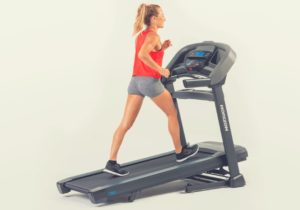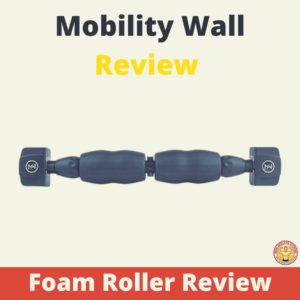Most women desire to have a bigger booty. Men tend to not care as much about how their butt looks in a pair of jeans.
However, the women are on something.
Stronger glutes don’t just add to your appearance. They benefit your health in various ways.
Struggling with lower back pain or not being able to push that extra mile on a run?
Your glutes might be too weak.
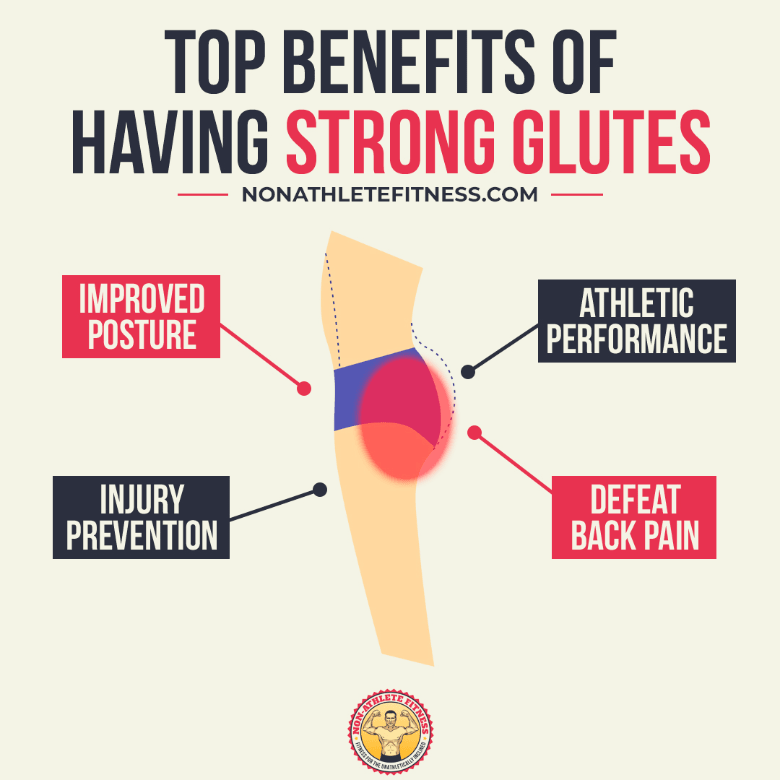
Anatomy of Glutes
When you hear glutes, your mind often goes to the gluteus maximus. However, there are more muscles involved.
Gluteals have three layers of muscles.
It also has six lateral rotator group muscles underneath them.
The muscles of the gluteal region are often separated into two groups: superficial abductors and extenders, and deep lateral rotators.
Superficial abductors and extenders are a group of large muscles that support the pelvis and the hips.
The deep lateral rotators are the smaller group of muscles that are responsible for laterally rotating the femur.
Combined, they allow you to walk, stand, and even sit!
Superficial Muscles
The gluteus maximus is the largest gluteal muscle. It’s primarily the muscle for hip movements and stabilizes your hip.
This muscle gives your body the ability to walk, run, or come up from the squat position.
The gluteus medius and the gluteus minimus function almost identically. They both deal with the abduction of the hip.
However, they do have a few differences.
For example, the medius is often called your “side-stepping” muscle because it controls the abduction of the thigh.
Your minimus is smaller in size than the medius and maximus. It keeps your pelvic stable and medially rotates your thigh.
When either of these two muscles is impaired, it can cause trouble with walking.
The tensor fasciae latae is found in the thigh but belongs to the gluteal muscle group.
This muscle allows you to rotate and extend your leg laterally. It also aids in the movement of your thigh.
Deep Lateral Rotators
Almost all of the deep lateral rotators deal with externally rotating the femur in your hip joint. One difference among the rotators is with the quadratus fermoris.
The quadratus femoris is a square-shaped muscle. Unlike the others that are responsible for lateral rotation and abduction, it’s only responsible for lateral rotation.
Benefits to Strong Glutes
Surprisingly, your glute muscles play a bigger role in your body’s health and function than you’d think.
There are several ways that building strong glutes improves your health.
Increase Bone Density
As you age, usually around age 30, your bone density starts to decrease. Your old and damaged bones get resorbed faster than newer bones.
This results in an increased risk for bone health problems and diseases like osteopenia and osteoporosis.
Exercises that place stress on the bones like running, some yoga moves, and body-weight training help aid in reversing bone density loss and postpone it.
Prevent Injuries and Reduce Pain
Believe it or not, strong glutes help support your lower back.
When you have weaker glutes, they can’t perform their necessary functions and other parts of the body will take over the support.
As time goes on, your other muscles or body parts start to wear down from stress. This causes back pain, hip pain, or knee pain.
Not only do weak glutes affect your lower back, hips, and knees, but they mess with your whole lower-body alignment.
Your glutes stabilize your hips.
Weak glutes result in poor alignment and can cause injuries like shin splints, anterior cruciate ligament sprains or tears, Achilles tendonitis, and iliotibial band syndrome.
Improved Posture
It’s no surprise that in this day and age poor posture is a problem for most people. We constantly sit at our desks or on our couches typing away on the computer.
Unfortunately, this causes many health issues.
Your hip flexors become tight and shortened. Your hip extensors over-stretched, and your glutes have trouble activating properly.
This all leads to common posture problems like swayback and kyphosis-lordosis.
You might also notice that poor posture gives the appearance of your gut sticking out even if you are relatively slim.
This happens when your hips tilt forward and push your abdomen out.
Better Athletic Performance
Your gluteus maximus has a lot of power when it comes to your athletic performance.
Your speed, acceleration, vertical distance, and endurance are all affected by it.
If you are properly training your hips to extend forward, your body improves with your ability to run, jump, and cycle.
You’ll be able to train faster, harder, and longer.
Fat Loss and Maintenance
It’s no secret that the more muscle you have, the more calories you burn. If you want to burn fat, you need a caloric deficit.
The more that you move, the more fat you lose.
Unlike when you just exercise, your muscles will constantly burn calories when they’re not activated.
Your glutes and hamstrings are two of the largest muscles in your whole body. Keeping them activated will help burn more fat and maintain fat loss.
Why Are Your Glutes Weak?
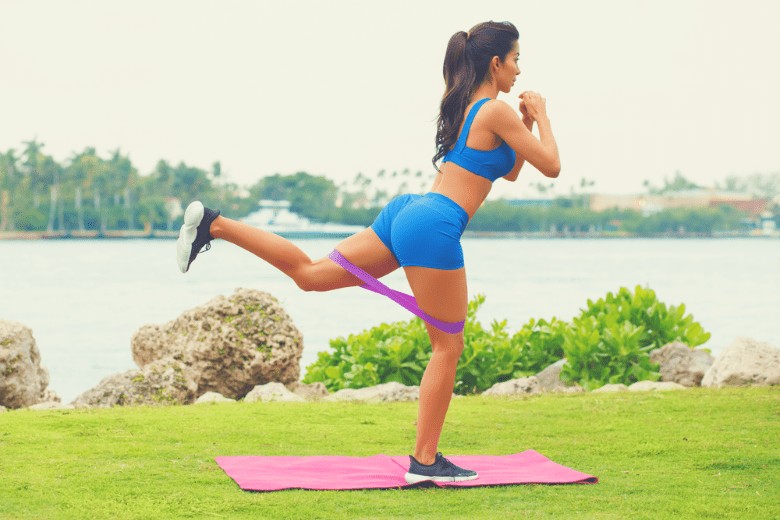
There are many reasons why you might have weak glutes. The most common reason stems from a sedentary lifestyle.
Most people work sedentary jobs and find themselves lacking the time to get a proper workout in.
However, this only causes more health issues.
When your glutes are weak, you’ll start to notice some symptoms like tight hip flexors, knee pain, lower back pain, or weak ankles and feet.
It’s recommended that if you live a mostly sedentary lifestyle that you get moving and activate your glutes once in a while.
There are even exercises that you can do at your desk to get some strength in your glutes. If you are someone who leads a more active lifestyle, don’t skip leg and glute day!
The more you exercise it, the better your workout performance and you’ll have a lower risk for injury.
Exercises for Strong Glutes
There are tons of exercises for your glutes.
Both men and women can appreciate the exercises and adjust them accordingly (i.e. weights vs a medicine ball or weights vs stability ball).
Hip Thrust (Weighted or Stability Ball)
Hip Thrusts can be performed with a dumbbell or even a barbell weight. The good thing about hip thrusts is they isolate the glutes, unlike many exercises.
Lay back on your bench or stability ball and keep your legs bent with your feet firmly on the floor.
Lift your hips toward the ceiling.
Your thighs should be parallel to the mat. Return to start position and repeat for up to 15 times per each set.
Take a minute rest in between the sets.
Single-Leg Deadlift (Weighted or Without)
Stand with your legs together (dumbbell in hand if going with weighted). Place more weight on your right leg, with your right arm on your hip and your left arm pointed at the floor.
Use your abs to lean forward slowly. Extend your left leg straight back and lower your torso to the floor until you’re parallel to the ground.
Drive back into your right heel and return to start. Aim for 15 reps per set and take a one-minute break between each one.
Lateral Step-Out Squat (Banded or Without)
This exercise is better performed with a band but it’s not necessary if you don’t have one or it’s too difficult at the start.
Stand with your feet under your hips (bands at your shins) and your hands at your chests.
Take a wide step to the right then bend your knees. Sit back and lower until your thighs are parallel with the floor.
Use your glutes and press up through your heels to the start position. Repeat for the opposite side for one full rep.
Repeat 15 times per each set (aim for at least three). Take a one-minute rest after you complete the sets.
Glute Bridges and Variations! (Banded, Weighted, or Without)
Glute Bridges are great for building strong glutes. You can do these banded, with a dumbbell, or without either one.
There are several variations to the standard glute bridge that are all worth performing. For a standard glute bridge, lie down with your knees bent.
Use a resistance band on your thighs or a weight on your pelvic area. Your feet should be flat on the floor and your arms at your sides.
Use your core and squeeze your glutes to raise your hips to the ceiling. Hold the position for a few seconds then lower back to the start position.
Perform ten to 15 reps for each set with a one-minute rest after you complete the sets.
Donkey Kick (With Dumbbell or Without)
Start on all fours.
If using a dumbbell, tuck it in the crease of your right leg. Keep your leg bent at a 90-degree angle and your foot flexed.
Kick your leg straight up until your hip and knee are parallel to the floor.
Reverse then return to start. Try 15 reps with three sets and a one-minute break within each set.
Isometric Lunge
Stand tall and take a wide step with your right foot on the ball of your left. Your arms should rest at your sides. This is considered your start position.
From this position, bend your knees and lower your body until your legs are bent to 90-degrees.
Clasps your hands at your chest.
Hold for up to 30 seconds. Return to start. Repeat 15 times with three sets.
Take a minute break once you complete all three sets.
Isometric Squat
Stand with your feet shoulder-width apart and hands at your sides. Push your hips back while bending your knees.
Your thighs should be parallel to the floor.
Your hands you can bring in front of your chest and clasp them.
Hold for up to 30 seconds. Perform 15 reps with three sets and a one-minute rest before the next exercise.
Leg Lifts (Banded or Without)
Start on your hands and knees. If using a resistance band, wrap it around your thighs. Keep your foot flexed and your leg straight.
Raise your left leg in the air until it’s aligned with your hips and parallel to the floor.
Use your glutes to lift your leg a little higher, then lower back to your hip.
Repeat for 15 times with at least three sets.
Take a one-minute break within each set.
Step Up
Stand facing a stair or a bench.
Place your hands on your waist and your feet under your hips.
Step with one foot onto the stair or bench and pull the other leg up towards your chest.
Reverse then return to start. Try for 15 reps with at least three to four sets. Rest for one- minute after each set then continue.
Bulgarian Split Squat
This exercise works not only your glutes but your whole lower body. It even works your core!
This is one exercise you want to perform correctly, or you can cause an injury, so pay close attention to your form during this one.
Stand two feet in front of a knee-level step or bench. Lift your right leg up behind you and put the top of your foot on the bench/step.
Keep your feet shoulder-width apart. Your right foot should be in front of the bench far enough to perform a lunge comfortably.
Make sure your left knee doesn’t fall over the line of your toes when you lunge down. Use your core, roll your shoulders back, and lean forward at the waist slightly.
Start to lower down and stop when your left thigh is parallel to the ground.
Push up with your left foot by using your quads and hamstrings to bring you to the start position.
If you’re first starting out, try two sets of six to eight reps.
Advanced users can perform three sets with 12 reps and even add weights.
Final Thoughts
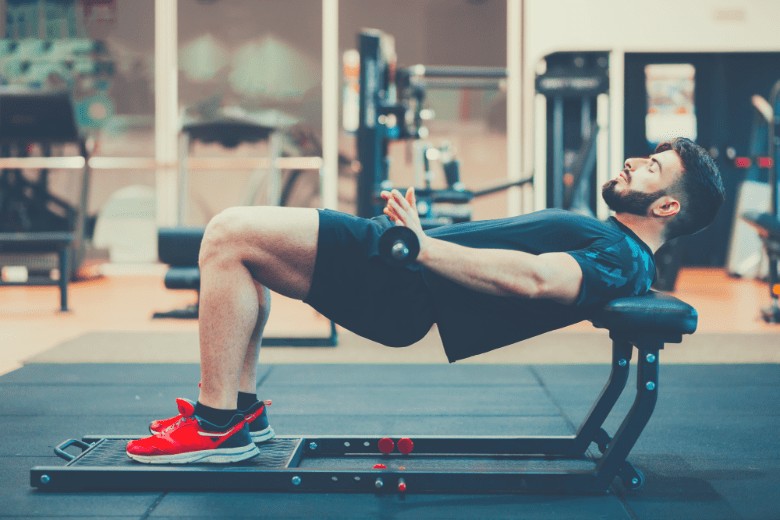
Not only women should work towards strong glutes.
They benefit everyone.
Weak glutes can result in health issues that will follow you throughout life. The great news is most of the exercises can reverse negative health issues and prevent future ones.
The journey to strong glutes doesn’t have to stem from appearance. Your body will thank you in the long run.

